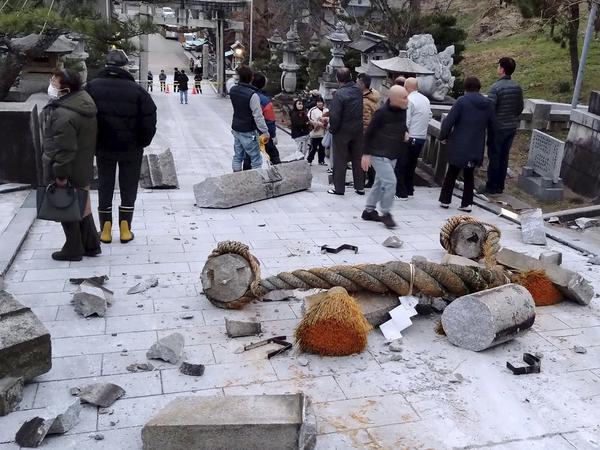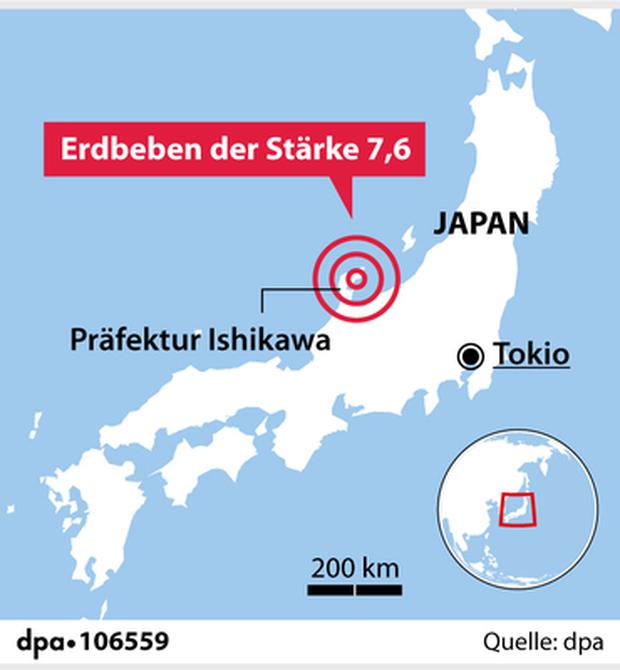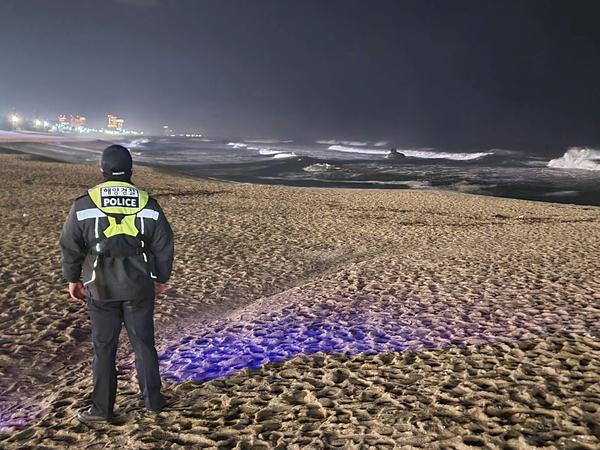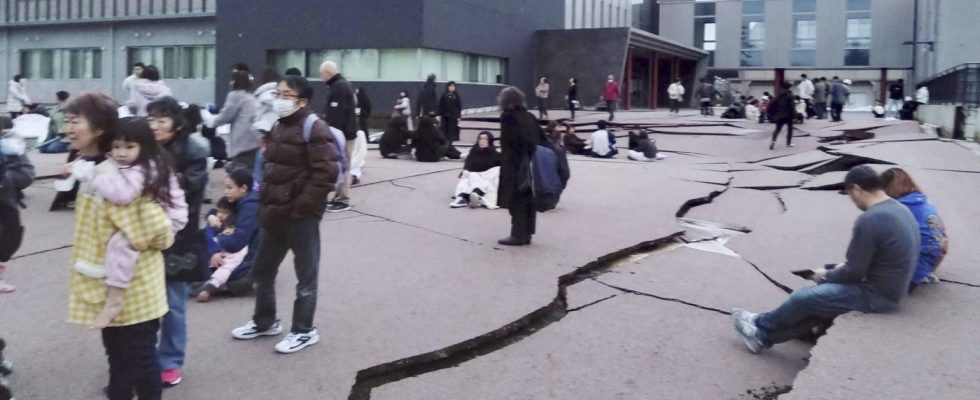On Tuesday night, concrete figures on the consequences of the series of earthquakes in central Japan became known. According to the government, more than 97,000 people in nine prefectures affected by the evacuation orders. According to Hokuriku Electric Power, nearly 32,000 households in Ishikawa remained without power late Monday evening.
The Pacific Tsunami Warning Center has now largely given the all-clear regarding dangerous tidal waves. “The tsunami threat is now largely over”, the warning center based in the US state of Hawaii said on Monday. According to Japanese authorities, waves of up to one meter are expected.
Previously, some coastal areas had been hit by tidal waves a meter high. The Japanese meteorological agency had warned of a tsunami wave up to five meters high for the Noto peninsula.
In the city of Shika in Ishikawa Prefecture, according to a media report a man after a building collapses for dead been explained. The Japanese broadcaster NTV relies on police information. The residents were in announcements Japanese radio stations called on people to immediately move to higher ground for their protection. According to Japanese media, they are still not allowed to return to their homes.
© REUTERS/KYODO
According to former Foreign Minister Yoshimasa Hayashi Several houses were destroyed in the earthquake. The government reported six cases in the town of Wajima on the Noto Peninsula where people were buried alive under rubble. According to local media, several people were injured by the series of quakes.

© AFP/STR
According to Prime Minister Fumio Kishida, the worst-hit areas are difficult for rescue workers to access. He refers to destroyed streets. A crisis team will meet in the coming hours.
Also Russia issued tsunami warnings, according to the state news agency Tass for the cities of Vladivostok and Nakhodka in the east of the country out of here. Tsunamis were feared on the west coast of the Russian island of Sakhalin; according to Tass, residents were evacuated there.
South Korea also warned coastal residents of possible tsunamis. Waves 45 cm high have already been recorded in Gangwon Province, and the waves could get higher and last up to 24 hours. Residents were urged to seek higher ground.

© dpa/Uncredited
The earthquake in Japan had happened on Monday around 4:10 p.m. (local time, 8:10 a.m. CET) in the Noto region occurred in Ishikawa Prefecture. According to new information from the US Earthquake Monitoring Service (USGS), it had a magnitude of 7.6. Before and after, a series of earthquakes were recorded just a few minutes apart.
Buildings in the area of the capital Tokyo, which has a population of millions, also began to sway. Pictures from the TV channel NHK apparently show damaged homes in Ishikawa Prefecture.

© dpa
“All residents must immediately move to higher ground,” public broadcaster NHK said because of the tsunami threat. The other Japanese broadcasters also interrupted their programs to warn people about the impending tsunami. A 1.20 meter high tsunami wave was reported from the city of Wajima just ten minutes after the severe earthquake.
The energy supplier Hokuriku Electric Power announced that More than 36,000 households are without electricity. Japan’s nuclear regulator said: there are no irregularities at the nuclear power plants in the region. Five power plants on the Sea of Japan are in operation, and one in Ishikawa, near the epicenter of the quake, had already been shut down for maintenance work.

© dpa/AP/Yonhap/You Hyung-jae
In parts of the areas hit by the earthquake, according to the network operators the telephone and internet connections failed. The Japanese airline ANA diverted four flights to Toyama and Ishikawa, its competitor Japan Airlines canceled most flights to Niigata and Ishikawa for the rest of the day. Also the High-speed train service to Ishikawa was canceled.
On March 11, 2011 The east coast of Japan was hit by a magnitude 9.0 earthquake and a tsunami. The natural disaster killed 18,000 people.
The tsunami also hit the Fukushima nuclear power plant, causing massive explosions and a meltdown in three reactors. It was the world’s worst nuclear accident since the Chernobyl disaster in 1986. (dpa, AFP, Reuters)

